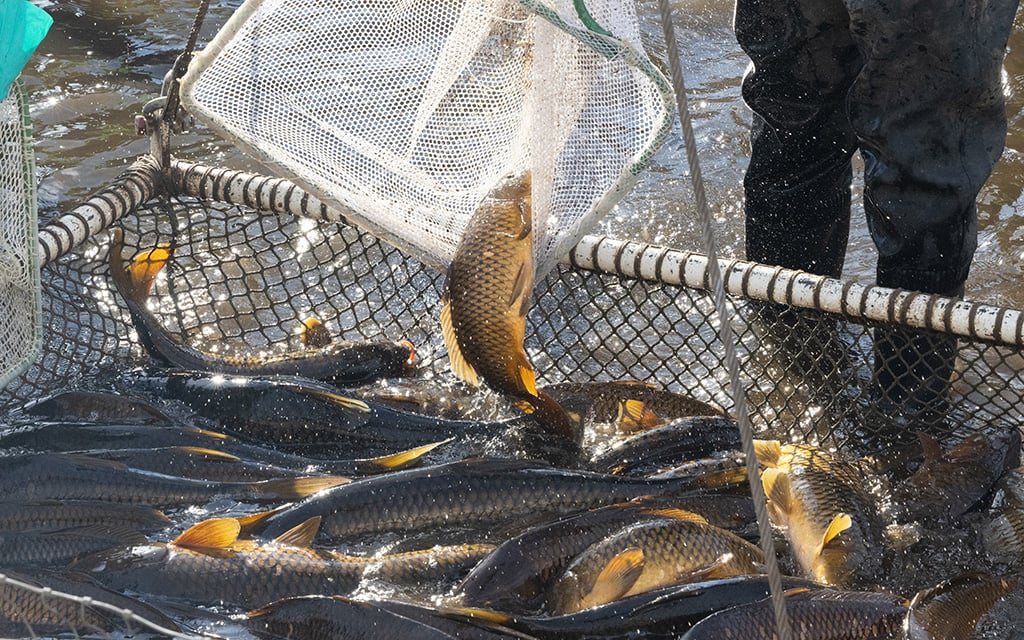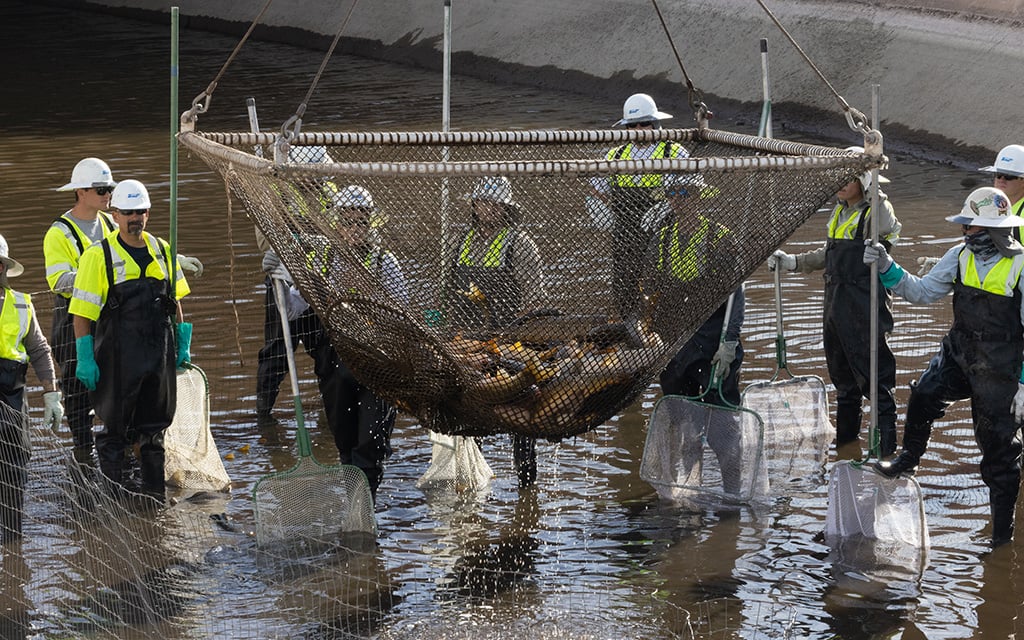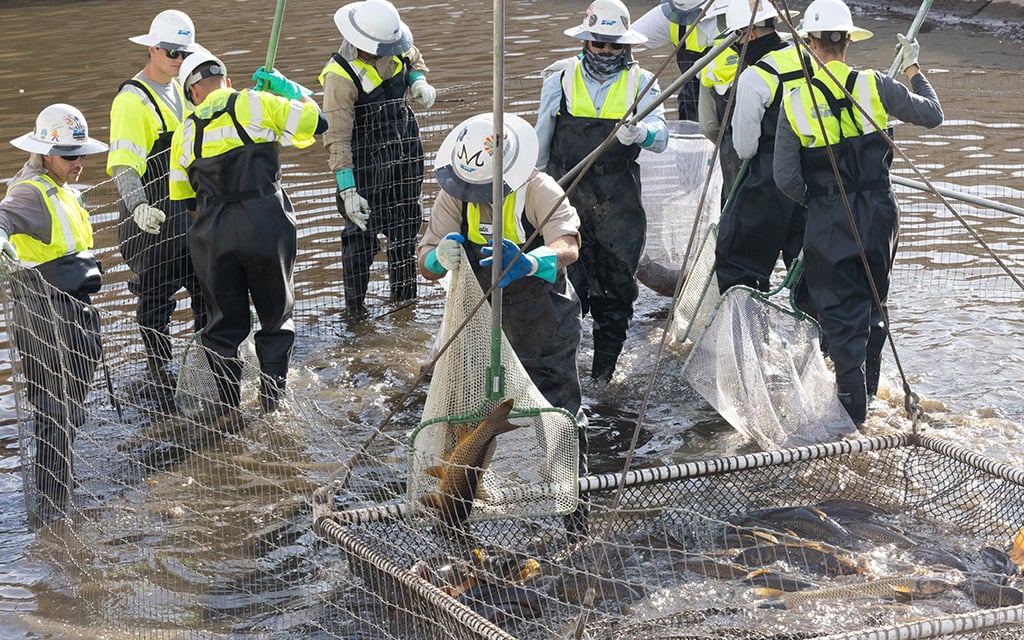MESA – Early on a November morning, Kyle Quiroz, chemical operations specialist and crew leader for Salt River Project (SRP), led 14 employees into a cold canal holding a giant fence-like structure. Workers dragged the fence across the bottom of the canal to corral around 100 white amur fish, also known as grass carp.
“You’ve got a lot of guys in the canal moving the fish, and then you’ve got the crew up top, so it’s a real big team effort and requires a lot of communication between the groundwater group, the construction group and everyone else,” Quiroz said.
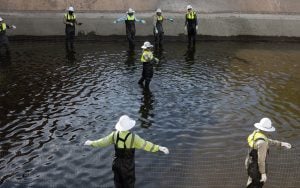
Kyle Quiroz (center), an SRP chemical operations specialist and crew leader, directs his team as they remove the white amur fish from a section of the canal in Mesa on Nov. 21, 2024. (Photo by Aryton Temcio/Cronkite News)
The grass carp thrashed and flung water up and onto the faces of workers, who used brute strength to push the fence with their bodies closer to a large net being dropped down by an excavator.
Smaller nets were tossed to workers in the canal and were used to transfer the fish into the large net. The excavator lifted the net into a truck that transported them to another part of the canal.
“It takes a lot of power, it isn’t just a one-person job,” said Brian Moorhead, an SRP senior environmental specialist.
Moorhead said SRP dropped the grass carp into the canals in 1990, and that the system of corralling the fish with a giant fence has been the most effective and the safest when the canal cleanup process starts.
“It’s worked out best just to have the crews down in there, pulling the fence themselves. It is a lot of work for those crew members,” Moorhead said.
To complete the canal cleanup, SRP calls upon staff from various departments.
“We have the experience to get this done safely and promptly to clean these canals,” said Ruben Medina, a chemical specialist with SRP. “If you’ve seen some of the things that come out of these canals, it would blow you away.”
Every year, SRP cleans a section of the Salt River canal system by relocating the fish, draining the area, removing debris and silt and performing repairs. This year’s cycle, from November to February 2025, involves cleaning up close to 10 miles of the 131-mile canal system. Trash, grocery carts and even cars have been found in canal cleanups.
“A lot of the guys really like to do the cleanup and request to do it again. A lot of them are from our department, but we get help from other departments,” said Justin Dewitt, SRP water systems supervisor. “In January, the canals are twice as big, and we depend on those guys who’ve done it before.”
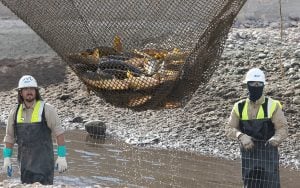
Two SRP workers watch as a net full of white amur fish, collected by the canal cleanup crew, are transported in Mesa on Nov. 21, 2024. (Photo by Aryton Temcio/Cronkite News)
Dewitt also said that the cleanup gives more insight into what different departments do and that helps with employee camaraderie to get the job done.
Medina, who has been at SRP for 16 years, said the cleanups barely feel like work.
“My department has been together for so long now, and we do the same jobs continuously,” Medina said. “We work in units, so over time, naturally, we get along. We’re family here. If you want to come into the family, we’ll open our arms and welcome you to come on in.”
Saying that the workplace is a family culture at SRP isn’t far-fetched. Quiroz, the crew leader who led the herding process, is Medina’s nephew. Medina’s wife, daughter and three other nephews also all work at SRP.
Medina said that management throws a big party with food at the end of the cleanup as part of a thank you for all the employees’ hard work.
“It’s a lot of planning and preparing, and management says where we’re going, how much we’re going to clean, how long we’re going to clean for and how many miles we’re going to clean,” Medina said. “Without all of us working together, it wouldn’t happen.”

